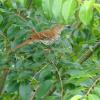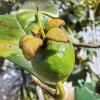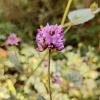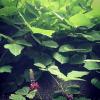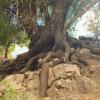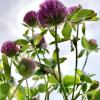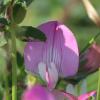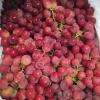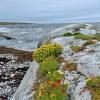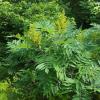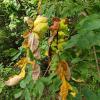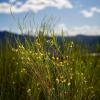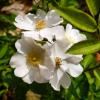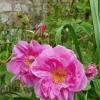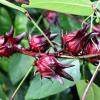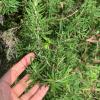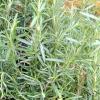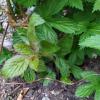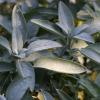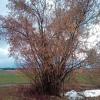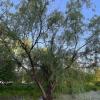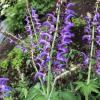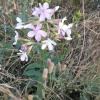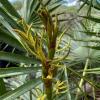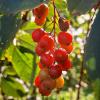Plant extracts & derivatives
Wild cherry (Prunus serotina) bark is considered to have astringent, tonic, expectorant, and sedative properties. It has been used to treat bronchitis, whooping cough, consumption, and dyspepsia.
Prunus Serotina Bark Extract has also been used as a healing agent for cuts and sores.
The Guava (Psidium Guajava) fruit has been used to treat high blood pressure, poor circulation, acidosis, asthma, prolonged menstruation, and obesity. Guavas are processed into jams, jellies, and preserves, and they are also found in cosmetic applications.
This Chinese plant called Babchi (Psoralea Corylifolia) has been used effectively to treat severe psoriasis and vitiligo. Research determined that when Psoralea was used internally or externally with exposure to the sun or ultraviolet light, the skin produced new pigment locally.
Abundant in flavanoid isoflavones, Kudzu roots extract leaves potent antioxidant, mild estrogenic, and skin whitening effects. It also has antibacterial and anti-inflammatory actions.
The kudzu plant (L. Pueraria lobata) is a plant of renowned beauty and versatility. The first written mention of the plant as a medicine is in the ancient herbal text of Shen Nong (circa A.D. 100).
Pueraria Mirifica extract helps to stimulate the development of mammary tissues to give you a fuller and firmer bust-line. It does this by introducing naturally occurring plant estrogens to the estrogen receptor sites in the breasts.
When mixed with water, soap bark forms a detergent (cleansing) lather, relieving itchy scalp and dandruff. Quillaja Saponaria Bark has also been used to wash eruptions, skin sores, itchy feet, and athlete’s feet.
Red clover extract has an antioxidant and anti-inflammatory effect. In addition, it improves hair density and protects cells against early aging.
Rich in phenolic acids, flavonoid glycosides, Restharrow root extract, it has potent antioxidant properties, protecting skin from free radicals and preserving UV-induced photoaging.
Resveratrol is a powerful antioxidant. It successfully combats skin aging and darkening.
Rhodiola rosea, also known as Arctic root or Golden root, is a member of the Crassulaceae family, a family of plants native to the Arctic regions of Eastern Siberia and grows at high altitudes.
Sumac (Rhus Glabra) has been considered valuable in the treatment of gonorrhea and syphilis. The tea has been used to cleanse the system and to treat leukorrhea, sores and wounds, bowel complaints, diabetes, fevers, and mouth sores.
Rhus Semialata is one of two distinct varieties of Rhus chinensis (Chinese sumac), a shrubby tree growing in East and South Asia.
Rooibos (Aspalathus Linearis) leafs wild-harvested in the Cederberg region (a small area in South Africa) are potent antioxidants, high in polyphenols and rich in minerals.
It is believed that the Greeks first brought the Rose (Rosa Canina) from Greece to southern Italy. They thought the red rose came from the blood of the goddess Aphrodite, whose foot got stuck in a thorn while trying to help Adonis.
It is thought that the Greeks first brought the rose from Greece to southern Italy. They believed the red rose came from the blood of the goddess Aphrodite, whose foot got stuck in a thorn while trying to help Adonis.
Rosa Damascena Flower Water is a clear, transparent liquid with an adorable rose odor. Thanks to its soothing and anti-inflammatory properties, Damask rose water significantly decreases edema by inhibiting the mediators of inflammation.
Thanks to their antiseptic, astringent, soothing, and toning properties, Roselle flowers have been used in folk medicine to treat numerous skin conditions.
Rosmarinus Officinalis speeds up cell renewal rate, eliminates acne and impurities, and stimulates dermal micro-circulation, lessening damaged capillaries and varicose veins.
Rosemary (Rosmarinus Officinalis) was thought to possess extraordinary powers of protection against evil spirits and demons. It was also a symbol of remembrance, friendship, and love.
Blackberry (Rubus Villosus) leaves have been used as a remedial agent. Blackberry leaves contain much tannin and have long been esteemed as a capital astringent and tonic.
Sage leaf extract is an organic skincare ingredient and natural antioxidant. The leaves of the small evergreen perennial are used in organic skincare products for their tonic, astringent, and soothing properties.
Salix Alba Bark Extract is an orange-brown to red-brown liquid with a characteristic odor. It is a natural ingredient derived from white willow bark.
Willow, of the family Salicaceae and genus Salix, is a common species in North America. The Black Willow (Salix nigra) tree, found in the eastern part of the North American continent, is famous for its dark brown, ridged bark.
This Chinese plant, Chinese Red Root Salvia (Salvia Miltiorrhiza), not to be confused with the more common Salvia Officinalis or Sage herb, has been used to increase metabolism, immunity, and blood circulation, as well as to treat coronary heart disease and ulcers.
To the ancient Arabians, Sage (Salvia Officinalis) was associated with immortality and longevity. They also credited Salvia Officinalis with increasing mental capacity.
Soapwort (Saponaria Officinalis) was obviously used in soaps. As its name implies, Soapwort forms a soap-like lather rich in saponins, which are natural cleansing agents.
Sasa Quelpaertensis Extract is a yellowish liquid with a characteristic odor. Sasa Quelpaertensis (Jeju Jolitdaecha) is an indigenous plant that grows only at Mt. Halla on Jeju Island, located south of the Korean peninsula.
Serenoa Serrulata fruit extract is a highly purified (>90%) lipophilic extract of Saw Palmetto berries rich in fatty acids. It is decolorized up to yield light yellow color.
Schisandra Chinensis Fruit Extract is a yellow to orange, oily liquid derived from Chinese berry grapes that restores the firmness of aged skin. It focuses on stimulating the synthesis of collagen XVII and Ladinin-1, boosting skin cohesion.
